If you are in the market to discover new and exciting flavors to add to your coffee brewing repertoire, this guide to the four types of coffee bean is the perfect place to start.
Those of us enjoying a life-long love affair with this rich and complicated beverage know just how diverse the mighty coffee bean can be. But, do you know your way around the dominant four coffee bean types likely to make their way into your trusty grinder?
It’s something that is well worth exploring ahead of choosing which beans will grace your next caffeinated cup. When you understand the different types of coffee bean and their unique qualities, you can select them with a sense of confidence.
You see, not only are the origins of these beans varied but also their flavors and even their caffeine content.
Whether you are on a quest for the sweetest sip or the most energizing kick, there is much to learn about Arabica, Robusta, Liberica, and Excelsa coffee beans.
Join us as we take a tour of the four types of coffee bean.
What Exactly Is a Coffee Bean?
The fact that we refer to coffee beans as, well, beans is a little bit misleading. To explain this, we might as well travel back in time to the origin story of the world’s coffee fixation, which can be traced to a curious goat-herder who was wandering with his flock on the Ethiopian plateau.
The herder noticed that his goats had developed a real taste for a certain berry, and whenever they ate them, the animals became unusually energetic!
The berry in question comes from the Coffea plant, and is often referred to as the coffee cherry. However, it wasn’t the flesh of these little fruits that was making the herder’s goats so manic, but rather the pits or seeds within them—because that was where the caffeine could be found.
Ultimately, when you grab a handful of fragrant coffee beans, what you’re actually holding is the seeds of the coffee plant, stripped of their fruity housing, dried and roasted, ready to be turned into a fine cup of Joe.
As you’ll soon discover, there are several different types of coffee plant, and four coffee bean types that we commonly grow them for. So, let’s get to know them all a little better.
The Four Types of Coffee Bean
There are four species of coffee bean from the Coffea genus that we grow to create our favorite morning beverage. They are Arabica, Robusta, Liberica and Excelsa.
They are cultivated and tended to within the so-called Bean Belt, an area that spans 50 countries around the world and traverses a slice of the globe’s surface between the Tropics of Cancer and Capricorn.
You may be surprised to discover that only two types of bean account for the vast majority of coffee production worldwide; the Arabica and Robusta coffee beans.
Two other closely related but distinct varieties, called Liberica and Excelsa, account for the rest, offering excitingly different flavours and growing profiles.
Given that we, collectively and internationally, consume around 2 billion cups of coffee every single day, isn’t it amazing that all of that deliciousness comes from only four species of a single plant?
Coffea Arabica: The Arabica Coffee Bean
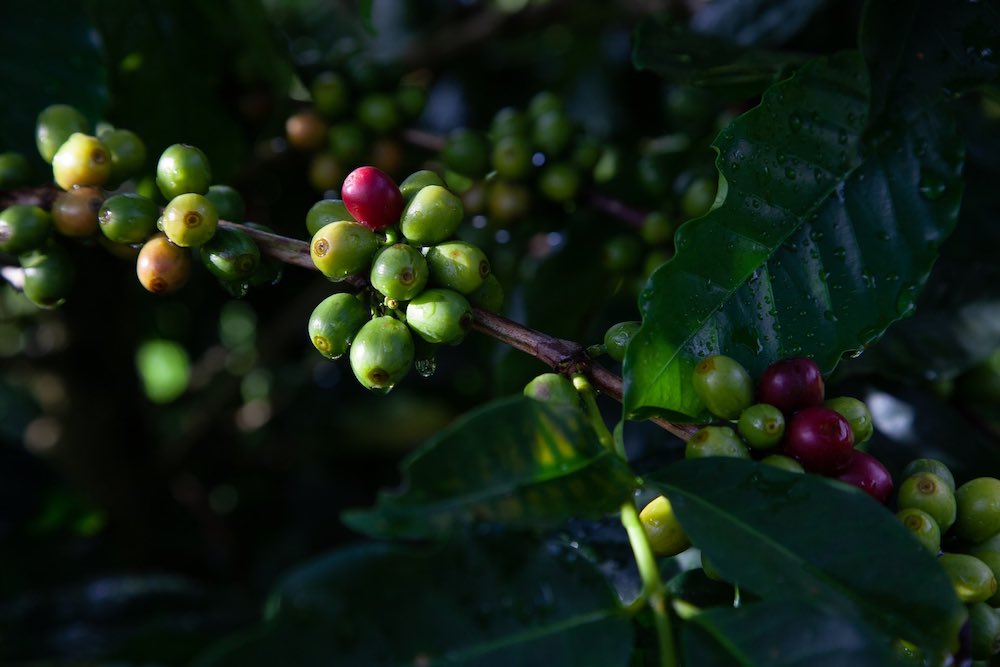
As by far the most popular bean, Arabica accounts for about 60% of all the coffee produced commercially today. Thanks to its delicious taste, the Arabica bean is favored by most gourmet and specialty coffee brands and considered to be the true royalty bean among our fab-four.
The Arabica coffee plant is native to Ethiopia and was indeed the coffee type those goats were so fond of! It was popularised as a tasty beverage and pick-me-up in 7th century Arabia—today’s Yemen—which is where its name originates from. That widely-appreciated energy boost can be attributed to an offering of 1.61g of caffeine per 100g of beans.
Among the four coffee bean types, Arabica also deserves special mention for its high antioxidant profile after roasting. Although we should note that Liberica and Excelsa coffee beans have not been as well studied as Arabica and Robusta, those looking for a health boost should certainly have Arabica beans on their shopping lists.
Arabica coffee lends well to cultivation with a particularly compact shrubby form that is easy to prune. However, challengingly, it’s also quite a delicate plant. You see, Arabica coffee only grows well above an altitude of 2,000 feet and demands steady rainfall, natural shade, and well-draining mineral-rich soil.
These plants are prone to lots of different diseases, like coffee leaf rust and coffee berry disease. Who knew that growing coffee could be so complicated?
The Arabica Coffee Bean Taste Test
Now, it’s important to know that the flavor notes held within each precious coffee bean depend not only on which of the four coffee bean types it is, but also in a diversity of factors such as where it was grown, what the weather conditions were, and how—and when—it was dried and roasted.
That said, Arabica coffee beans are famed for their sweet, smooth, and multi-faceted taste profile. This is a medium-bodied bean with bright acidity and little bitterness. An ideal choice for those who prefer to drink their coffee relatively un-modified, so they can really taste the flavors!
Coffea Caniphora: The Robusta Coffee Bean
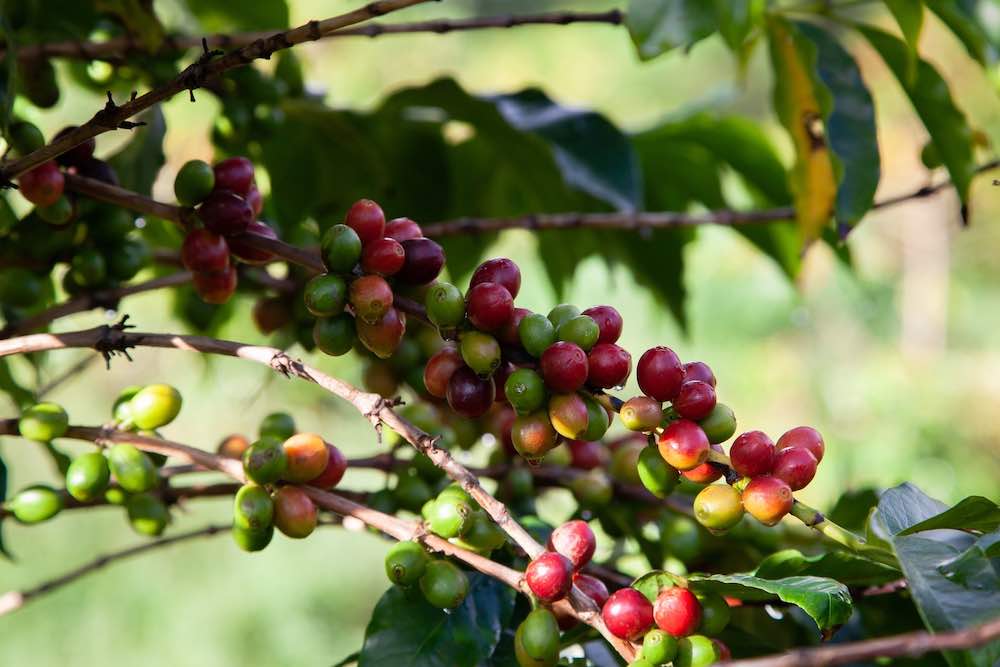
And now, our adventure takes us to the second most popular type of coffee and the Robusta coffee bean. As you might imagine, this particular species of coffee plant is more robust than its Arabica cousin—and that is indeed where its name comes from!
It’s fair to say that Robusta coffee beans are the feistiest members of the family, not only because they can thrive in a far wider range of environments and are less prone to disease, but also because they pack a far bigger caffeine punch. Yes, if you want to feel a mental tingle soon after imbibing, Robusta is the coffee bean for you. In fact, this bean type contains roughly twice the caffeine content of Arabica, coming in at around 2.26g per 100g of beans.
The Robusta coffee plant is much larger than the Arabica. It originally grew wild in sub-Saharan Africa, but its role as a cultivar has carried it onto coffee plantations across Africa, Indonesia, and Vietnam. Thanks to its hardy nature, Robusta is cheaper to produce making it popular for use in coffee blends and for brands seeking a certain style and flavor.
The Robusta Coffee Bean Taste Test
Alongside those impressive caffeine credentials, Robusta coffee offers a very different profile to Arabica for discerning coffee drinkers. If downing a cup made only from this bean, you can expect a distinctly darker, earthier, and likely more bitter flavor, accompanied by a richer crema that may have a chocolaty undertone.
While this bean may not be first choice among many gourmet coffee drinkers, it is very popular in Southern Europe, where its buzz-producing espressos are just the way to start the day! The powerful presence of Robusta also complements the sweet milkiness of lattes and cappuccinos, so it certainly has its part to play in the wider coffee-making landscape.
Coffea Liberica: The Liberica Coffee Bean
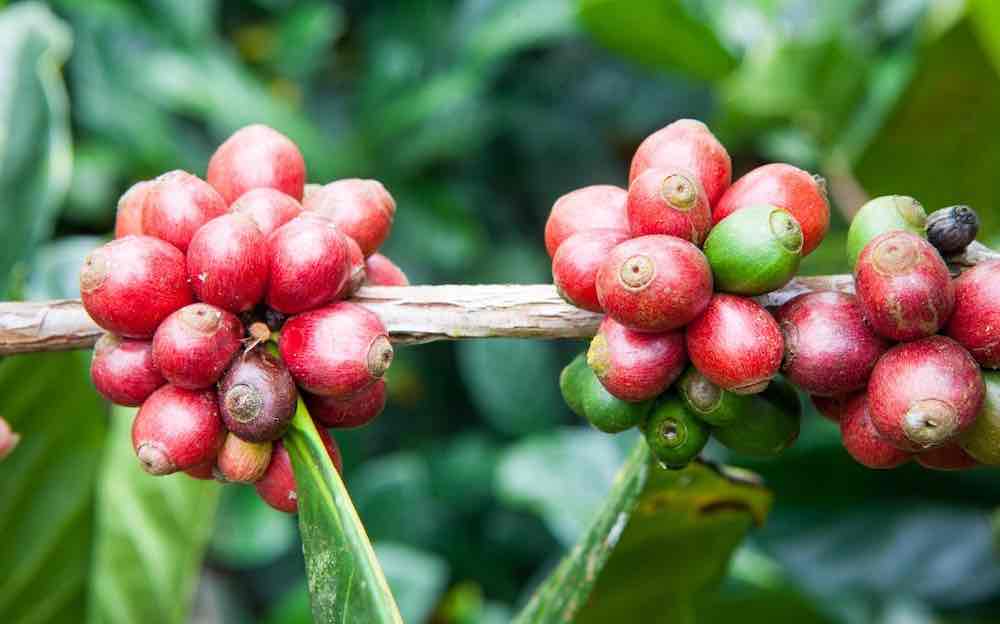
Moving on to a far rarer bean, we discover the Liberica coffee plant. This intriguing type may only account for a tiny proportion of coffee production today, but it was once a very essential aid to maintaining coffee habits. Around 150 years ago, an attack of coffee rust wiped out much of the world’s supply of Arabica coffee beans, and Liberica stepped up to fill the gap. It’s always good to have a backup plan!
The Liberica coffee bean came originally from West Africa, although today it is grown and consumed primarily in the Philippines, Indonesia, and Malaysia. In terms of hardiness, this coffee variety falls somewhere between Arabica and Robusta, tolerating poorer soils and moderate altitudes reasonably well, but still preferring some shade and good drainage.
The plant itself is much larger than Arabica and Robusta—so much so that takes the form of a tree and ladders are usually required to harvest it! Keen-eyed coffee lovers will also spot that the beans themselves are distinct, being bigger and less uniformly shaped than the more popular coffee bean duo. Liberica is relatively low on caffeine content, packing roughly 1.23g of caffeine per 100g of beans.
The Liberica Coffee Bean Taste Test
Liberica coffee beans don’t appear within the American and European markets so often, most likely because of their strong flavor. To get a sense of what that taste might be like, we only need to look at what this type of coffee is called in the Philippines, where it is much more popular. There, it is colloquially known as “barako”, which translates as “manly”!
For those still curious to discover something beyond their usual palette of coffee flavors, the notes to seek out include smoky, nutty, and woody undertones with floral and fruity high notes. These beans are not to everyone’s taste but are certainly worthy of the caffeinated voyager’s exploration.
Coffea Excelsa: The Excelsa Coffee Bean
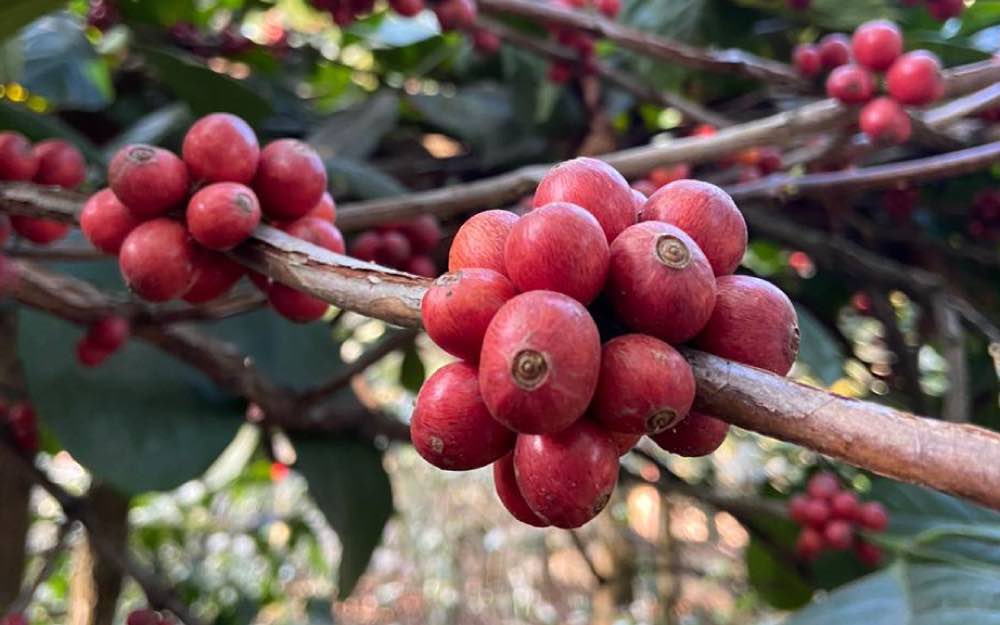
Finally, the time has come to get acquainted with the Excelsa coffee bean, which accounts for around 7% of the global coffee crop. Fascinatingly, scientists recently reclassified Excelsa as a sub-variant of the Liberica species. But, in the eyes of any dedicated and noble barista, they will never be one and the same!
Excelsa beans are usually grown in Southeast Asia, and the plants themselves are similar to Liberica, growing long and tall, and offering moderate hardiness in terms of the conditions they will tolerate. However, this is where the similarities stop, because Excelsa offers a very different flavour profile indeed.
In elite coffee drinking circles, Excelsa was once considered an inferior variety akin to Robusta, but today this misconception is attributed to the way the coffee was grown more than the properties of the plant itself. In fact, among the different coffee bean types, we may soon see this one start to rise in popularity because it marries some of the sweeter attributes of Arabica with the robustness of Robusta.
Excelsa coffee beans offer the lowest caffeine content of the four coffee bean types, with only 1g of caffeine per 100g of beans. Depending on whether you are in search of a boost or wish to avoid over-stimulation, you may see that as a bust or a boon!
The Excelsa Coffee Bean Taste Test
While parallels can be drawn between Arabica and Excelsa, there are striking differences too—this truly is a unique type of coffee bean. The Excelsa bean offers a soft fragrance and fruity flavor. It possesses a tart acidity and a rich undertone, with less of the bitterness often found in Robusta but still a striking depth. This bean is increasingly found in specialty blends because it contributes an unusual layer of complexity.
The Importance of Knowing the Four Coffee Bean Types
The sheer diversity of coffee flavors on the market creates a veritable playground for all who take pleasure in drinking this tasty and transformative beverage. However, all of that choice can also feel a little overwhelming—especially if we have a sense of what we like and don’t, but aren’t sure how to find it!
Many coffee drinkers find that too much caffeine can be detrimental, making being able to identify coffee types that will be a little kinder on their nervous system a useful tool. Equally, others have sky-high caffeine tolerance and are always on the hunt for something powerful in order to boost their academic, sporting, or professional performance.
Being able to navigate the different types of coffee bean can be a big bonus in any of these endeavors—you simply need to know which styles and flavors suit you best.
Once you’ve pinned down exactly what will make your cup of coffee truly irresistible, you can strategize which coffee bean types to buy, the roast and grind level to reach for, and experiment with different styles of coffee preparation until you strike gold!
As a rule of thumb, if you prefer a lighter, sweeter coffee profile, it is likely that Arabica beans will always be your sweetheart—if you’ll excuse the pun.
In contrast, if you prefer an earthier taste that packs a punch, Robusta, Liberica, and Excelsa are more likely to suit. Of course, contemporary coffee blends can work true magic in terms of balancing the myriad properties of all of these beans.
Do you have a favorite among the four different types of coffee bean? Or, is there one that you’ll be trying soon thanks to our list of attributes?
We’d love to hear more about your coffee drinking experience—and do keep an eye out for our other articles on everything from the origins of coffee beans to the different types of coffee drinks. You’ll be an expert in no time!

Hey there! I’m Austin and I love coffee. In fact, I drink about 5 americanos a day. I started BrewingCoffees because I wanted to share my love of coffee with the world. Before starting BrewingCoffees, I worked as a Barista for 7 years.
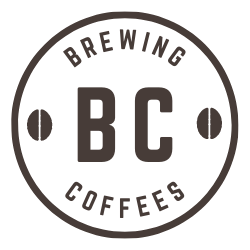
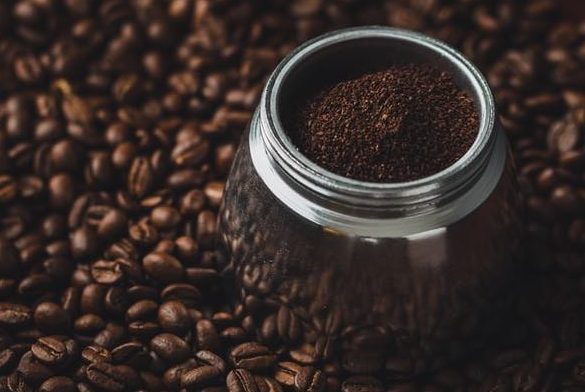
Leave a Reply